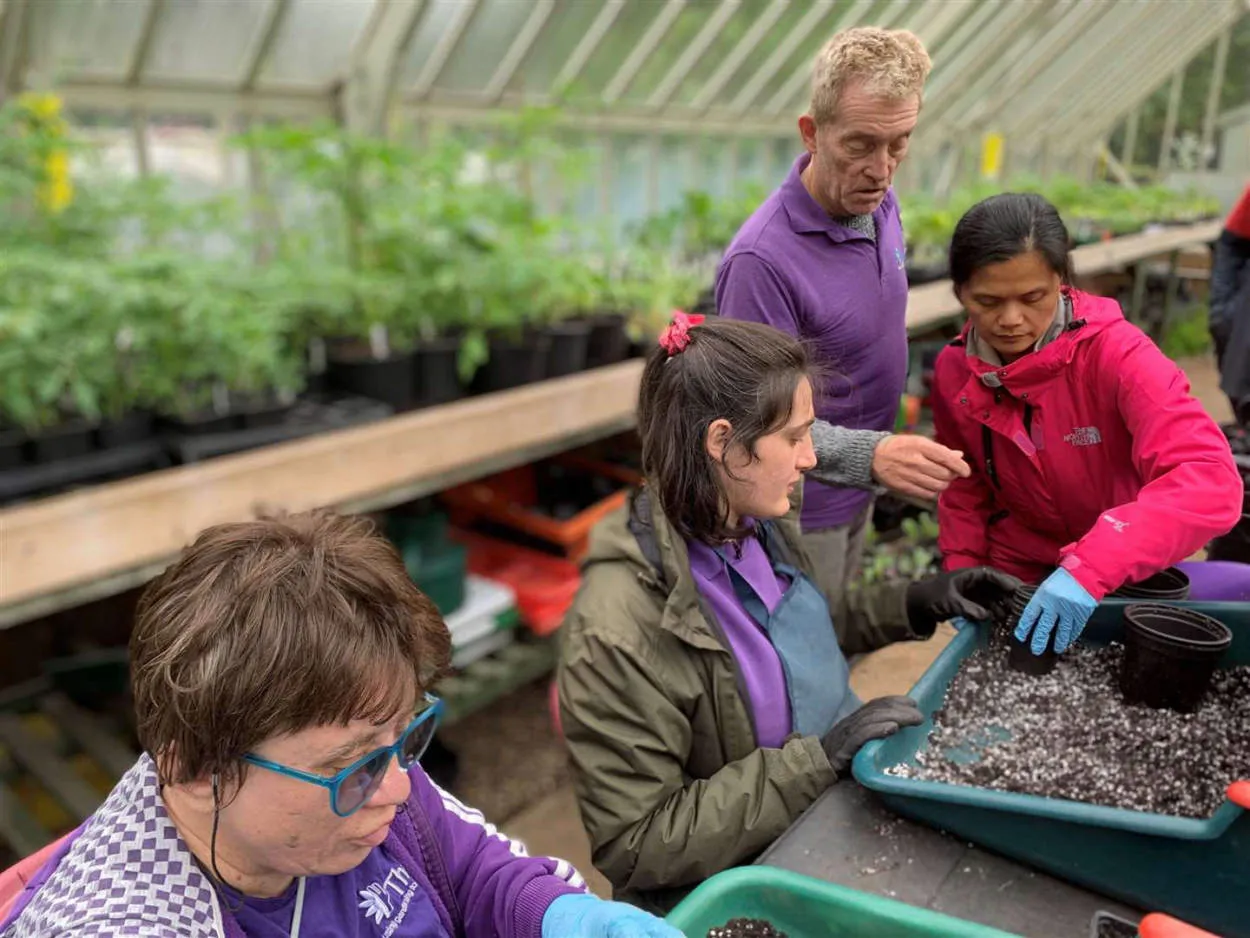Gardening offers a multitude of therapeutic benefits that go beyond just creating beautiful spaces. From reducing stress and anxiety to improving mental and physical well-being, this article explores the various ways in which immersing in the world of plants can positively impact our overall health.
Gardening for Mental Health
Gardening is not just about cultivating plants and beautifying spaces; it also has significant therapeutic benefits for our mental health. Engaging in gardening activities can provide a sense of peace, reduce stress levels, and improve overall well-being.
1. Nature’s Calming Effect
Being surrounded by nature has a soothing effect on the mind. Whether it’s the fragrance of flowers, the sound of birds, or the feeling of soil on your hands, gardening allows you to connect with the natural world, promoting relaxation and a sense of tranquility.
2. Physical Exercise
Gardening involves various physical activities such as digging, planting, and watering, which provide an excellent form of exercise. Regular physical activity releases endorphins, the “feel-good” hormones, which can positively impact mental health by reducing anxiety and depression.
3. Sense of Achievement
Watching a plant grow from a seedling to a blooming beauty gives a sense of accomplishment. Gardening offers a tangible and visible result of your efforts, fostering a sense of pride and boosting self-esteem.
4. Stress Reduction
Gardening is a way to distract the mind from daily worries and stressors. It provides an opportunity to focus on the present moment, allowing the mind to relax and unwind. The repetitive and rhythmic tasks involved in gardening, such as watering or weeding, can be calming and meditative.
5. Social Interaction
Joining community gardens or participating in gardening clubs opens up opportunities for social interaction. Engaging with like-minded individuals, sharing knowledge, and collaborating on gardening projects can enhance social connections and provide a support system that contributes to improved mental well-being.
6. Boosting Creativity
Gardening is a form of creative expression. From designing the layout to choosing the plants and colors, it allows individuals to tap into their creativity. Engaging in creative activities has been shown to increase positive emotions and reduce negative ones.
Gardening is a simple yet powerful tool for nurturing our mental health. By spending time with nature, engaging in physical activity, achieving personal growth, and finding solace in the process, we can harness the therapeutic benefits of gardening to improve our well-being.
Physical Benefits of Gardening Activities
Gardening is not only a pleasurable hobby but also offers numerous physical benefits. Engaging in gardening activities regularly can have a positive impact on your overall well-being. Let’s explore some of the physical advantages of this therapeutic pastime.
1. Physical Exercise
Gardening involves various physical movements such as digging, planting, watering, weeding, and pruning. These activities provide a moderate level of exercise, helping to strengthen muscles and improve flexibility.
2. Cardiovascular Health
The physical exertion required for gardening contributes to cardiovascular fitness. Through consistent gardening, you can elevate your heart rate, increase blood circulation, and improve heart health.
3. Improved Motor Skills
Gardening requires coordination and fine motor skills. Activities like handling tools, planting seeds, and delicately tending to plants can enhance dexterity and hand-eye coordination.
4. Bone Health
Being exposed to sunlight while gardening allows your body to produce vitamin D, which aids in calcium absorption, contributing to strong and healthy bones.
5. Stress Reduction
Gardening has a calming effect on the mind and body, helping to reduce stress levels. Being surrounded by nature and engaging in nurturing plants can promote relaxation and improve overall mental well-being.
6. Enhanced Immunity
Gardening exposes you to various microorganisms in the soil, ultimately strengthening your immune system. This exposure can increase your resistance to common illnesses, leading to improved overall health.
7. Weight Management
The physical exertion involved in gardening activities can contribute to burning calories and maintaining a healthy body weight. It serves as a gentle form of exercise that can aid in weight management.
In conclusion, engaging in gardening activities provides a wide range of physical benefits. From exercise and cardiovascular health to improved motor skills and stress reduction, this therapeutic pastime can positively impact your overall well-being.
Creating a Sensory Garden
A sensory garden is a specially designed outdoor space that stimulates the senses and provides a therapeutic experience for individuals of all ages and abilities. It is a unique garden setting that focuses on engaging all five senses – sight, smell, touch, taste, and sound.
The main purpose of a sensory garden is to provide a calming and stimulating environment that promotes relaxation, well-being, and sensory integration. By incorporating various elements such as plants, colors, textures, scents, and sounds, a sensory garden offers a wide range of benefits.
Visual Stimulation
A sensory garden is visually appealing and visually stimulating. The use of vibrant colors, contrasting patterns, and carefully chosen plants creates a visually pleasing environment. It offers a feast for the eyes and can be particularly beneficial for individuals with visual impairments.
Aromatherapy
Sensory gardens utilize fragrant plants to create an aromatic experience. Different scents can evoke emotions, memories, and relaxation. The smell of lavender, for example, has a calming effect, while rosemary can boost concentration and mental clarity. Aromatherapy through sensory gardens can enhance overall well-being.
Tactile Sensations
The texture of plants, flowers, and other garden elements in a sensory garden provide tactile stimulation. Soft leaves, velvety petals, and rough bark engage the sense of touch, promoting sensory exploration. This tactile experience can be beneficial for individuals with sensory processing disorders or those seeking sensory input.
Taste Experiences
Incorporating edible plants in a sensory garden provides an opportunity for taste exploration. Herbs, fruits, and vegetables not only add visual interest but also appeal to the sense of taste. Harvesting and sampling fresh produce from the garden encourages a connection with nature and healthy eating habits.
Calming Sounds
Nature-inspired sounds, such as wind chimes, flowing water, or birds chirping, can create a calming and peaceful atmosphere in a sensory garden. These sounds help mask unwanted noises, reduce stress, and promote relaxation.
Creating a sensory garden offers a multitude of benefits, including stress reduction, increased focus and attention, improved sensory processing, enhanced cognitive skills, and a heightened connection to nature. Whether it is in a school, healthcare facility, or personal backyard, a sensory garden provides a therapeutic retreat for anyone seeking sensory stimulation and relaxation.
Encouraging Wildlife for a Balanced Ecosystem
Gardening not only provides a rewarding and therapeutic experience for individuals, but it also plays a crucial role in maintaining a balanced ecosystem by encouraging wildlife to thrive. When we create a garden that welcomes various forms of wildlife, we contribute to the overall biodiversity and ecological balance of our surroundings.
One of the key benefits of gardening for wildlife is the provision of food sources. By selecting a diverse range of plant species, including those that produce nectar, berries, or seeds, we can attract various birds, insects, and small mammals to our gardens. These creatures play vital roles in pollination and seed dispersal, aiding in the reproduction and survival of plants.
Incorporating specific features into our gardens such as bird feeders, bird baths, and insect hotels can provide additional resources and shelter for wildlife. Bird feeders can attract a variety of bird species, allowing us to observe their behaviors while providing them with a reliable food source. Similarly, bird baths serve as essential water sources, particularly during dry periods.
Insect hotels or bug houses offer refuge for beneficial insects such as bees, ladybugs, and butterflies. These insects assist with pollination, pest control, and decomposition, contributing to the overall health of the garden ecosystem. Building a small pond or water feature can attract frogs, dragonflies, and other water-dependent creatures, augmenting the biodiversity of the garden.
Creating natural habitats within our gardens is crucial for the survival of various wildlife species. Leave some sections of the garden untouched with fallen leaves, rocks, or logs to provide suitable hiding places and shelter for reptiles, amphibians, or small mammals. This way, we can create a harmonious environment where these creatures find safety and protection.
It is essential to remember that encouraging wildlife in a garden does not involve resorting to harmful chemicals or pesticides. Instead, opt for organic gardening methods, which avoid the use of harmful substances that can pose risks to the health of wildlife and ecosystem as a whole.
In conclusion, gardening can be a meaningful and therapeutic activity that not only benefits individuals but also contributes to the preservation of a balanced ecosystem. By creating a garden that welcomes wildlife, we promote biodiversity, assist in pollination and seed dispersal, and provide essential resources and habitats for various creatures. So, let us embrace the opportunity to cultivate a garden that harmoniously coexists with the wildlife around us.







